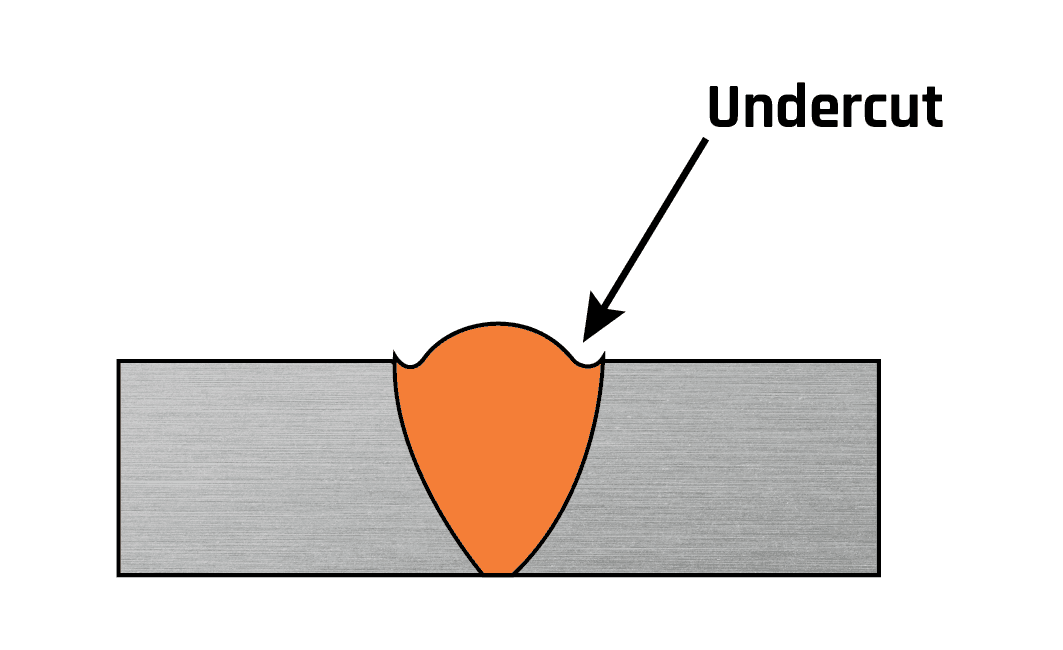Mastering the Art of Welding: Just How to Stay Clear Of Undercut Welding Issues for Flawless Fabrication Results
Performance and accuracy are vital worldwide of welding, where also the smallest imperfection can compromise the architectural honesty of a produced item. One usual obstacle that welders face is damaging, an issue that can damage a weld joint and lead to costly rework. By recognizing the root triggers of undercut welding and carrying out effective strategies to avoid it, welders can raise their craft to new levels of quality (Preventing weld undercut). In the pursuit of remarkable fabrication outcomes, grasping the art of welding to prevent undercut problems is not simply a skill however a need for those pursuing excellence in their job.
Comprehending Undercut Welding

To stop undercut welding, welders ought to make sure proper welding parameters, such as readjusting the existing, voltage, traveling rate, and keeping the right electrode angle. By comprehending the causes of undercut welding and executing preventative procedures, welders can accomplish high-grade, structurally audio welds.
Root Causes Of Undercut in Welding
Understanding the elements that contribute to damage in welding is vital for welders to produce high-quality, structurally audio welds. Insufficient welding incorrect or current welding rate can likewise add to damage. Understanding these causes and executing appropriate welding methods can aid prevent damaging concerns, making certain solid and durable welds.
Methods to Stop Undercutting

To reduce the risk of undercutting in welding, welders can use critical welding strategies intended at improving the quality and integrity of the weld joints. In addition, making use of the proper welding strategy for the specific joint configuration, such as weave or stringer beads, can add to decreasing damaging.
In addition, correct joint preparation, consisting of guaranteeing tidy base materials complimentary of contaminants and using the proper welding consumables, is crucial in stopping undercut flaws. Employing back-step read welding methods and managing the weld bead profile can additionally aid disperse warmth uniformly and decrease the threat of undercut. Normal inspection of the weld joint throughout and after welding, in addition to carrying out quality control steps, can assist in identifying and addressing damaging concerns quickly. By carrying out these methods faithfully, welders can achieve perfect manufacture results with minimal undercut defects.
Relevance of Correct Welding Parameters
Choosing and preserving proper welding parameters is necessary for attaining effective welds with very little flaws. Welding criteria refer to variables such as voltage, current, travel rate, electrode angle, and securing gas circulation price that straight influence the welding procedure. These specifications should be thoroughly adjusted based on the kind of material being bonded, its density, and the welding strategy utilized.
Proper welding parameters ensure the correct amount of heat is put on thaw the base steels and filler product uniformly. If the specifications are set expensive, it can result in extreme warm input, creating burn-through, spatter, or distortion. On the various other hand, if the criteria are as well reduced, insufficient fusion, absence of penetration, or damaging may occur.
Top Quality Assurance in Welding Procedures

Conclusion
To conclude, grasping the art of welding requires a comprehensive understanding of undercut welding, useful content its reasons, and methods to stop it. By guaranteeing proper welding criteria and applying high quality assurance techniques, flawless construction results can be accomplished. It is essential for welders to consistently make every effort for quality in their welding procedures to prevent undercut problems and produce high-quality welds.
Undercut welding, an usual flaw in welding procedures, happens when the weld metal does not correctly fill the groove and leaves a groove or clinical depression along the bonded joint.To stop undercut welding, welders ought to ensure correct welding parameters, such as readjusting the existing, voltage, traveling speed, and preserving the appropriate electrode angle. Poor welding present or incorrect welding rate can also add to undercut.To mitigate the threat of undercutting in welding, welders can use tactical welding strategies aimed at boosting the high quality and honesty of the weld joints.In conclusion, understanding the art of welding requires a detailed understanding of undercut welding, its reasons, and techniques to avoid it.